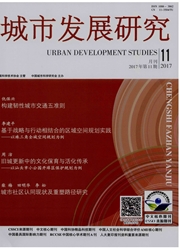

 中文摘要:
中文摘要:
城市发展转型背景下,我国特大城市正面临前所未有的风险。根据北京、东京、首尔三市市民的调查数据,对东亚三个特大城市所处的风险社会阶段及其特征开展比较研究。本次调查的18种风险涉及自然、公共卫生、生产安全、环境、经济、社会、道德和技术等多种类型。调查结果表明:(1)首尔市民风险感知的绝对值最高,东京市民对风险发生的敏感度最高;(2)基于贝克的风险社会理论对三市所处的风险社会阶段进行分析,发现首尔和东京的风险社会特征十分突出,而北京尚处于从工业社会向风险社会的过渡阶段;(3)对三城市市民的风险知识比较发现,东京和首尔市民的风险知识水平相对更高,而北京市民的风险知识水平较低;(4)在政府的风险管理能力方面,中国政府属于"灾后应对型",韩国政府属于"灾前预防型",日本政府属于介于二者之间。
 英文摘要:
英文摘要:
Chinese megacities are confronting unprecedented challenges in the context of urban transformation. Based on survey data of the public's risk perception in Beijing,Tokyo,and Seoul,this paper makes comparative studies of stages of risk society and their features in these three metropolises. The 18 risks examined range over various types such as nature,public health,safety in manufacturing,environment,economy,society,and technology. Results indicate that( 1) citizens of Seoul have highest levels of risk perception in terms of absolute value,and citizens of Tokyo have the highest levels of sensitivity to the probability of risk occurrence;( 2) Seoul and Tokyo are identified with salient features of risk society,whereas Beijing is still in a transitional stage from industrial society to post-industrial society;( 3) by comparing people' s risk knowledge in three cities,it shows higher levels of risk knowledge among the citizens of Tokyo and Seoul,but a relatively low level for the citizens of Beijing;( 4) in terms of governmental capabilities of risk management,the Chinese government falls under the type associated with post-disaster response,the South Korean government under pre-disaster prevention,and the Japanese government somewhere in between.
 同期刊论文项目
同期刊论文项目
 同项目期刊论文
同项目期刊论文
 期刊信息
期刊信息
